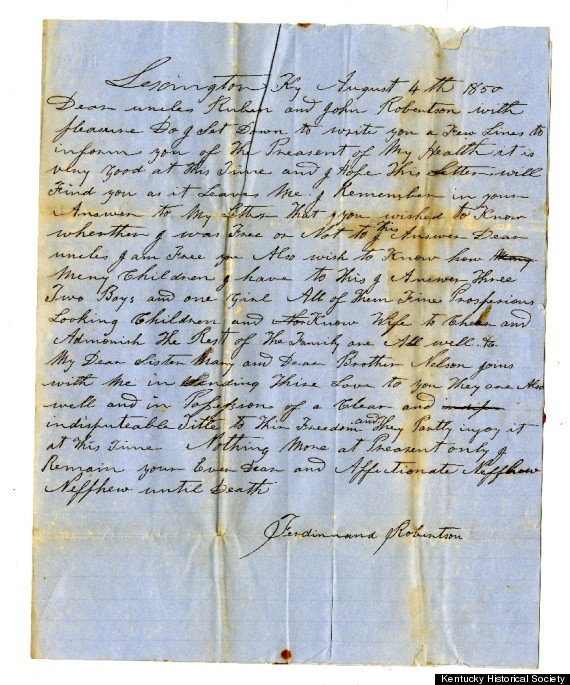Handwritten Letters Detail Lives Of Freed And Enslaved African Americans
Share
Explore Our Galleries
Breaking News!
Today's news and culture by Black and other reporters in the Black and mainstream media.
Ways to Support ABHM?
By Jessica Cumberbatch Anderson, Huffington Post
Life for an African-American southerner was a mixed bag of “troubles” and personal success circa 1841, experiences revealed in a series of 27 handwritten letters that have been recently acquired by the Kentucky Historical Society (KHS).
“What makes these letters so interesting is that they give us a glimpse into the personal and social lives of African Americans before the Civil War,” Jennifer Duplaga, Manuscripts Curator at the Kentucky Historical Society, told The Huffington Post.
The letters, written mostly by a woman named Isabel/Isabella Watson between 1841 and 1883, originate in Mississippi City, Miss. and include news of people’s health and illnesses, activities, church and religion, the enslaved status of people in the Hopkinsville, Ky., community, births and deaths, and the sale of individuals.
“The bulk of these letters were written before 1859,” Duplaga said. “The post Civil War letters, which begin in 1873, appear to have been written by a different generation.”
Those later letters focus more on individuals working as teachers, buying homes, purchasing household items, and their general health and economic situations, Duplaga explains. Those written before the war are more outward looking, she says, detailing efforts to gather information about others, while the post-war letters focus more inward and offer more personal insights.
Read more about the letters here.
Comments Are Welcome
Note: We moderate submissions in order to create a space for meaningful dialogue, a space where museum visitors – adults and youth –– can exchange informed, thoughtful, and relevant comments that add value to our exhibits.
Racial slurs, personal attacks, obscenity, profanity, and SHOUTING do not meet the above standard. Such comments are posted in the exhibit Hateful Speech. Commercial promotions, impersonations, and incoherent comments likewise fail to meet our goals, so will not be posted. Submissions longer than 120 words will be shortened.
See our full Comments Policy here.












Wow! I’m really enjoying the design and style of your website. Are you using a custom made theme or is this readily available to all users? If you really don’t want to say the name of
it out in the public, please contact me at: coralchristian@gmail.com. I’d love to get my hands on this template! Many thanks.
Thanks, Chris. Glad you like it. This is a custom made theme designed by our graphic artist Anthony Ferraro (see About ABHM).